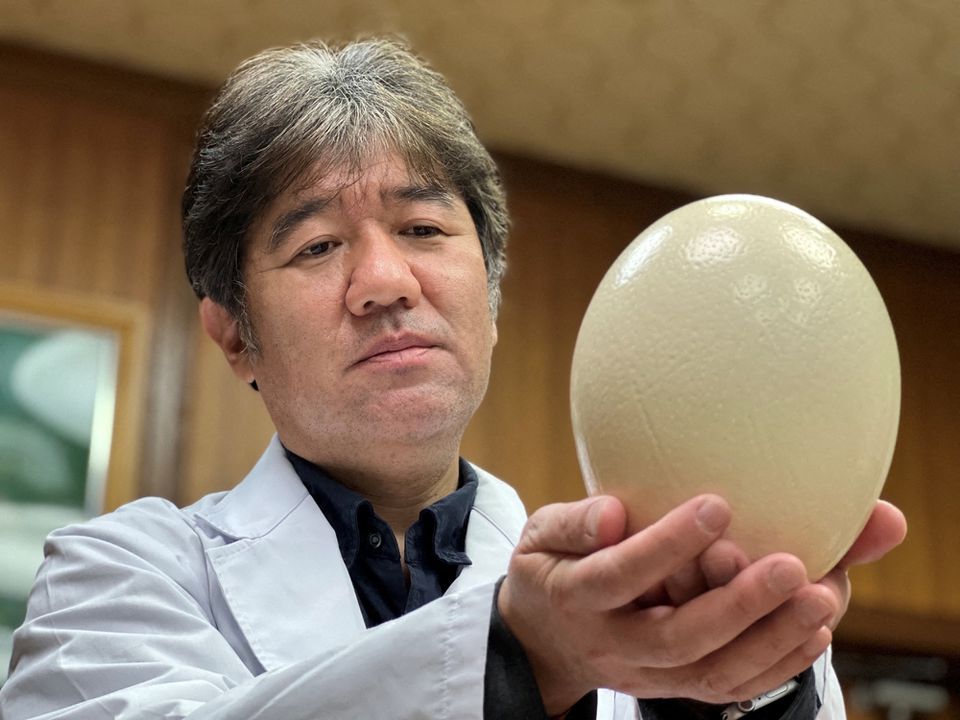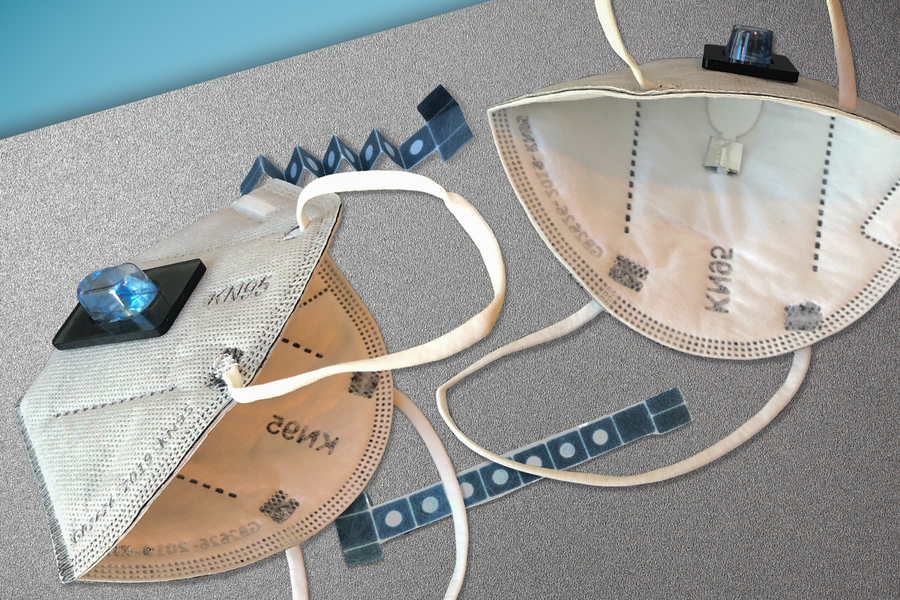Face-masks have become indispensable and a necessity with the prevailing COVID-19 pandemic; its development has been a matter of urgency to keep abreast of the pandemic. We discuss here different examples of innovative face-masks still under study.
Luminous Masks
Japanese researchers at the Kyoto Prefectural University have created masks that glow if they contain traces of the coronavirus when exposed to ultraviolet light. The idea is that a special mask filter can be taken out after use then sprayed with a fluorescent dye containing the coronavirus antibodies from ostrich eggs. If the mask wearer has the virus, the filter will glow brightly.
Ostriches were chosen for the strength of their immune system in fighting infectious diseases; they live up to 60 years and rarely die from infectious diseases or minor injuries. To obtain antibodies, researchers inject female ostriches with an inactive virus to create coronavirus antibodies that are extracted from their eggs without harming the birds. Females produce about 50-100 eggs per year and the cost of producing one gram of antibodies is one-thousand dollars; the cost is, thus, cheaper than with other animals.

Credit: KPU/Handout via REUTERS.
Researchers aim to find an easy way to detect people who do not show symptoms when wearing the masks. These masks are planned to be available on the market in July 2022. Researchers hope to develop them to glow automatically and immediately when exposed to the virus without ultraviolet light exposure.
Diagnostic Masks
Researchers Peter Nguyen from Harvard University and Luis Soenksen from the Massachusetts Institute of Technology (MIT) in the United States of America (USA) wanted to find a method that increases the rates of examination and rapid detection of those infected with the virus. They were able to create a face-mask with small sensors that can diagnose the wearer within 90 minutes.

Credit: MIT News Office.
They merged two different techniques: the lateral flow immunoassay, which are rapid diagnostic tests; and SHERLOCK, which are freeze-dried biosensors that detect nucleic acids. To activate the sensors in the mask, the user presses a button, which releases a small tank of water that moistens the freeze-dried ingredients. The droplets of the user's breath break down by interacting with the virus DNA molecules and produce a signal in the form of a change in color.
This diagnosis is characterized by its speed and ease of application without the need for laboratory equipment, in addition to its accuracy in comparison to the PCR test. One of the possible applications of these masks is mapping the spread of the mutations, as well as using them later in the detection of influenza. Since the symptoms of influenza are similar to the common cold, this mask can distinguish between them and identify the appropriate treatment rapidly.
Mask-Efficiency Monitoring Device
Researchers from Northwestern University in the USA have created the “FaceBit” device placed in the mask via a magnet, to monitor its efficiency. The device alerts users when a leak in the mask is detected through pressure sensors. It also measures breathing rates with a temperature sensor, and heart rate from subtle head motions caused by the pulses.
The device is connected to the smartphone via Bluetooth; through an application, it receives notifications and alerts as a leak or health issues occur. It is also equipped with a battery that lasts for 11 days or more. This device helps doctors and healthcare workers pursue their work without worrying about leaks caused by various movements. Check FaceBit
Researchers worldwide continue to innovate and develop to provide solutions that meet the challenges posed by the pandemic. We hope these innovations be available on markets and become accessible to everyone.
References
forbes.com
kyodonews.net
news-medical.net
news.mit.edu
scientificamerican.com
Cover Image by Freepik